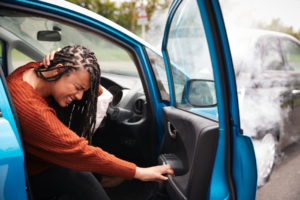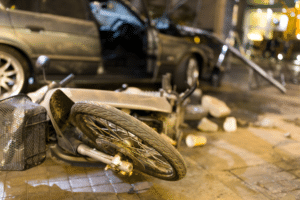State Route 7 in Meigs County, Ohio has reopened after a two-vehicle crash that occurred following a car chase that started due to a domestic violence situation involving a firearm. The pursuit began in West Virginia and continued over the Ohio River, eventually reaching Meigs County. Deputies deployed stop sticks along State Route 7 to stop the pursued vehicle. That car crossed the center line and collided with another vehicle. Both drivers were fatally injured.
High-speed police chases are inherently dangerous—but who’s responsible when a third party is injured or killed?
Liability during police chases
Police pursuits are a delicate balance between apprehending a suspect and ensuring public safety. The pursuit policy varies among law enforcement agencies. Factors such as the severity of the crime, road conditions and the risk to public safety influence the decision to engage in a pursuit.
The primary party responsible for the pursuit-related fatality or injury is often the driver attempting to flee. Courts typically hold the fleeing driver (or their estate) accountable for the consequences of their actions, including injuries or fatalities. In civil court, this is litigated under a theory of negligence. In short, if the pursued driver’s actions caused the fatality, and it was foreseeable that fleeing would lead to harm, the fleeing driver typically bears a significant portion of the liability.
However, sometimes law enforcement may share responsibility. Courts often examine whether the pursuing officers adhered to departmental pursuit policies and whether their actions were reasonable given the circumstances. If law enforcement acted recklessly or negligently during the pursuit, they might share some liability. Law enforcement agencies may benefit from qualified immunity, which shields government officials from personal liability in the course of their duties. However, this immunity is not absolute.
Comparative negligence
Determining liability in fatalities resulting from police pursuits is a complex process. While the fleeing driver is typically the responsible party, the law acknowledges the potential role of law enforcement and other factors. Other involved parties may share a degree of fault. This is called comparative negligence. When parties share fault in an accident, the court assigns each party a percentage of responsibility. Any damages they recover are reduced by that percentage.
If you’ve been injured as a result of a police chase, the Law Offices of Tim Misny can help. We’ll review your claim and explain your potential legal options when you call today.
Discuss your accident claim with an Ohio personal injury lawyer
The Law Offices of Tim Misny can help you with your accident claim. When you’re the victim of negligence or recklessness, I’ll Make Them Pay!® Call my office at (877) 614-9524 so that I can evaluate your case right away.




